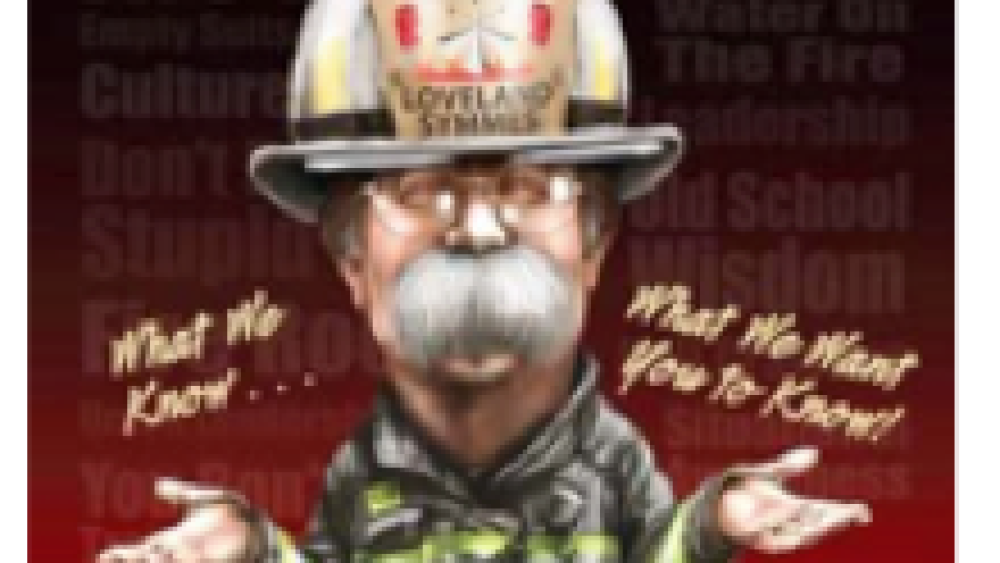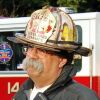This excerpt comes from “Pass It On,” Chief Billy Goldfeder’s recently published collection of fire service essays penned by a variety of fire service leaders on a wide range of topics. This excerpt comes from Burton A. Clark, who is among other things a retired National Fire Academy Executive Fire Officer instructor, a 40-year fire veteran, a visiting scholar and an operations chief during national disasters. All royalties go to the National Fallen Firefighters Foundation and the Ray Downey Scholarship Program.
First fire: Important lessons
By Burton A. Clark
August 1970, a Saturday afternoon in Landover, Maryland; I had just moved there from New Jersey and did not know anyone. My wife sent me up the street for bread. When I came out of the store, I noticed the Kentland Volunteer Fire Company 33 across the street; the doors were open. No one was there except the Dalmatian named Halligan.
A couple minutes passed, the fire trucks returned, the firemen were in dusty softball uniforms. We talked, they handed me a beer and asked if I liked to play softball; I said sure. So, I became a volunteer fireman on the spot.
I had been on the fire department for about two weeks but never actually got on the fire truck. One afternoon during the middle of the week I was at the station sitting in the TV room watching The Gong Show. A young guy in an Army uniform came into the room. We introduced each other; he was Jimmy Panetta, a member who just came home on leave. We talked; Jimmy asked if anyone had shown me anything. No, they just told me to get gear off the spare rack and get on the truck. Jim said, “Let me show you some stuff,” and we went to the apparatus bay.
He proceeded to show me how to stand on the back step of the pumper — hold on to the bar and bend your knees. Then he said he was going to explain how to be the layout man. He showed me the bundle of hose with a rope around it. He said, “The truck will stop at the fire hydrant; the officer will open the door and yell, ‘Layout.’” I was to step off the back step, pull the rope and hose off the truck, wrap it around the fire hydrant, and yell ‘Go’ to the driver. I got it — now I’m a real fireman. Back to The Gong Show we went.
Ten minutes later, the bells and lights flashed and rang, we got something. I put my gear on and got on the back step. Four of us responded; the paid driver, the paid sergeant, Jimmy in the bucket, and me on the back step. We turned left out of the firehouse, went four blocks, and turned right into my apartment complex. Fire was blowing out of the third floor windows.
The engine stopped, the office opened his door, and yelled “Layout!"; there was a hydrant to the left, so I stepped off, wrapped the hose around the hydrant, yelled “Go”, and I was done. I had no idea what to do next. I just stood next to the hydrant, watching the fire. It seemed like forever for help to arrive, but within two minutes the next pumper from Kentland pulled up with only a driver, Wayne Ramsey. We don’t know each other, but Wayne did know that I had no idea what I was doing. The steamer cap was not removed from the hydrant, the bundle of hose was still wrapped around the hydrant, and the hydrant wrench was still hooked to the rope.
The hydrant was on a grassy island in the parking lot so the pumper could nose right in, only 4 or 5 feet from the hydrant. Wayne knelt down to untangle the hose and take the steamer cap off. He told me “Get that big hose off the front bumper and bring it to me.” I could follow directions. The hose was a big 5-inch soft sleeve with a 15-pound brass coupling on the end of it. I grabbed the hose about 8 inches behind the coupling, pulled it, and swung around to give it to Wayne. The coupling hit him in the side of the head, and he went down like a rock. I realized that not only did I not know what to do, I was dangerous.
Wayne shook off the clubbing and said, “Stand there and don’t move.” For an hour I was froze in place watching this amazing ballet of firefighters. The longer I stood there, the sicker and sicker I got in my gut; it was a terrible feeling, one I had never experienced before, and never wanted to feel that way again. I promised myself I would never not know what to do next. There was more to being a firefighter than softball, beer and The Gong Show.
November 1972, I graduated number 1 from the District of Columbia Fire Department Recruit Class 249. Today, I am still learning what to do next.













